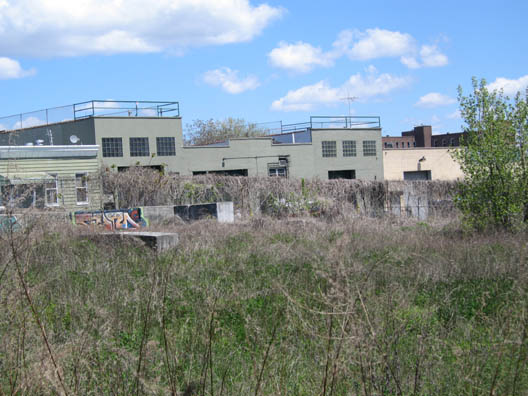
The Public Place site presents some sobering environmental issues and the extent to which you will be comfortable with the cleanup will be determined by the extent to which you are comfortable with the state’s willingness to be aggressive in enforcing cleanup standards on KeySpan, which is responsible for the heavy lifting, and on the developer that is chosen to develop the property. A full environmental cleanup of the property will not be done. Contamination runs as deep as 150 feet from the toxic soup left behind by the Manufactured Gas Plant that once occupied the site. KeySpan estimated the cost of a full cleanup at $699 million and the timeframe as more than a dozen years.
As a result the site will only be excavated to a certain depth and less extensive cleanups ranging in cost from $62.3 million to $105 million will be done. Clean soil will be put in place and the remaining contaminants will be left in place. Devices will be put in place to retrieve substance like coal tar as it is collected. And the entire site will be capped to prevent seepage. The method itself is widespread, but is increasingly controversial in terms of its effectiveness and long-term safety. There are dozens of pages in the RFP released yesterday detailing the environmental horror underground that will have to be addressed. We read them and they are very, very unpleasant.
We will simply relate a paragraph about the problem and its source:
Until 1959, the site was used as a manufactured gas plant, leading to signifi cant site contamination. KeySpan Corporation is the party responsible for environmental remediation and has signed a Voluntary Cleanup Agreement with the New York State Department of Environmental Conservation (DEC). KeySpan has begun designing the remedy and the selected developer (“Developer”) must coordinate the development scenario with the site remedy. Keyspan will perform the remediation of the Carroll Gardens MGP site, including the Public Place Site to the extent practicable. However, the remediation will not remove all contamination from the parcels and the developer will be responsible for providing any necessary site improvements related to the environmental condition post-remediation, including but not limited to, sub-slab depressurization systems, importation of residential quality surface soil, etc.
GL Analysis
If we had faith in the cleanup method that will be used and in the bureaucracy that will regulate it, we would say that developing Public Place for housing is a great idea. We certainly can use every unit of affordable housing that we can get. However, it’s our considered opinion that the DEC is to the environment what the Department of Buildings is to neighborhood quality of life. Which is to say that we wouldn’t count on the Department of Buildings to save us from the illegal construction work next door (unless we had a blog and could put up YouTube Videos to publicly shame them into action) and we wouldn’t entrust our health or that of children to the Department of Environmental Conservation.
Yes, we’re biased. We are not big fans of leaving cleanups of major toxic problems to businesses whose bottom lines depend on doing a job as cheaply and quickly as possible. Nor do we have full faith in the ability of hired consultants to do a job with the diligence of aggressive regulators. Personally, you couldn’t give us free housing in Public Place in perpetuity.

1 response so far ↓
1 Did the City Discourage Public Input on Gowanus Green/Public Place? « // Dec 17, 2008 at 2:59 pm
[…] would bring much-needed affordable housing to the area, it has been controversial because of the extreme environmental issues on the […]